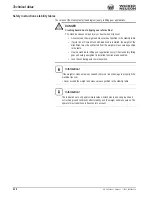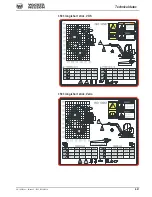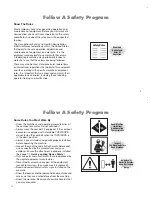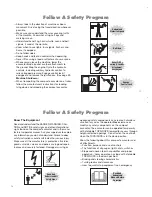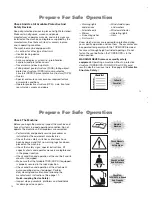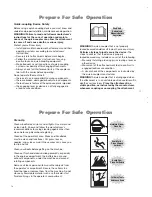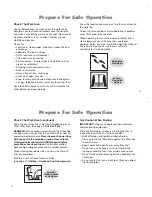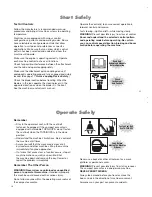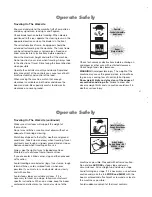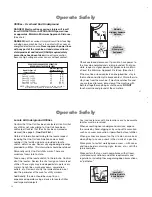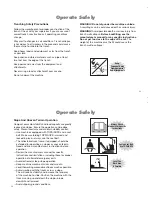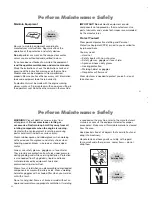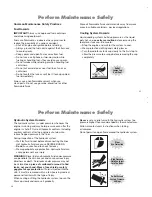
19
Prepare For Safe Operation
Check The Work Area
Know—beforehand—as much about the worksite as
possible. Locate all ground workers near the worksite
and make sure clothing worn is easily seen. Be aware of
weather conditions that can affect visibility, ground
stability and traction.
Check for:
— Location of steep slopes, slide areas, drop-offs and
overhangs
— Adequate traction on slopes
— Traffic locations and movement
— Thick dust, smoke and fog
— Soil conditions—look for signs of instability such as
cracks or settlement
— Standing water and marshy areas
— Rocks and stumps
— Holes, obstructions, mud or ice
— Location of open trenches
— Exact location of any buried and/or overhead electri-
cal, gas, telephone, water, sewer or other utility lines
Have the utility company mark, shut off or relocate the
utility before you begin working.
Know the location and work plan for other machines on
the worksite.
Correct unsafe conditions. Avoid operating in problem
areas that cannot be corrected.
When operating the machine inside a building, know
what clearances you will encounter—overhead,
doorway, aisles, etc. Also, know the weight limitations of
floors and ramps. Make sure there is sufficient
ventilation for inside operation.
Walk Around
The Worksite
Be Seen –
Wear Visible
Clothing
20
Prepare For Safe Operation
Check The Work Area (continued)
Know the exact location of electrical, telephone, gas or
other utility lines. (See page 5,
One-Call First
.)
DANGER!
Death or serious injury will result from touching
or being near a machine that is in contact with or near an
energized electrical source.
Never approach power lines
with any part of the machine or load unless all local,
state/provincial and federal (OSHA) required safety
precautions have been taken.
Use extreme caution
because high voltage sources can arc without contact.
When working near power lines, you must assume all
lines are energized.
Maintain a safe distance from all utilities.
(See page 31,
Utilities—Overhead And Underground
.)
Use Caution When Fueling
IMPORTANT!
Always use approved fuel containers
and dispensing equipment.
Fuels are flammable, so observe these practices to
reduce the possibility of a serious accident.
— Shut off engine and ignition during refueling.
— Always ground the fuel nozzle against the filler neck
to avoid sparks.
— Keep sparks and open flames away from fuel.
— Do not use a cell phone or two-way radio while
fueling or handling fuel—they could cause sparks.
— Do not smoke while refueling or when handling fuel
containers.
— Do not overfill the tank or spill fuel. Clean up spilled
fuel immediately.
Locate All
Utilities, Maintain
A Safe Distance
Содержание 2503
Страница 12: ...I 10 OM 25 3503 us Edition 4 1 Ba2503_3503us4_0SIX fm Index...
Страница 40: ...1 28 OM 25 3503 us Edition 4 1 2503_3503b110 fm Introduction...
Страница 182: ...4 8 OM 25 3503 us Edition 4 1 2503_3503b410 fm Malfunctions...
Страница 230: ...5 48 OM 25 3503 us Edition 4 1 2503_3503b550 fm Wartung...
Страница 250: ...6 20 OM 25 3503 us Edition 4 1 2503_3503b610 fm Technical datac 2503 3503 long short stick...
Страница 251: ...OM 25 3503 us Edition 4 1 2503_3503b610 fm 6 21 Technical datac 3503 long short stick VDS 3503 long short stick Vario...
Страница 252: ...6 22 OM 25 3503 us Edition 4 1 2503_3503b610 fm Technical datac...

